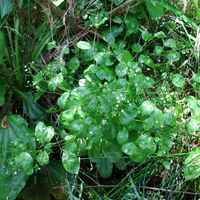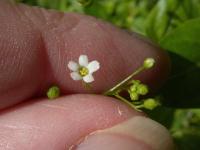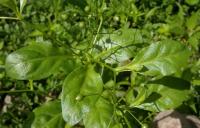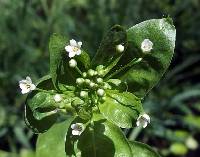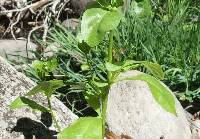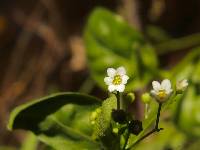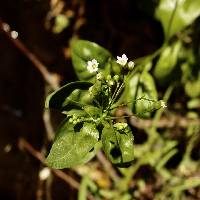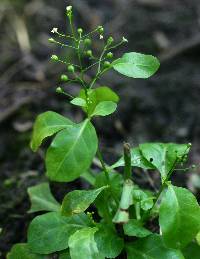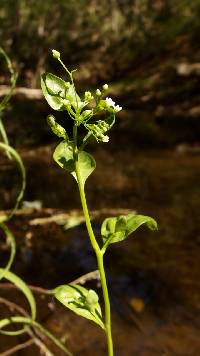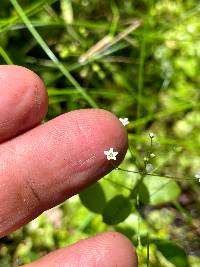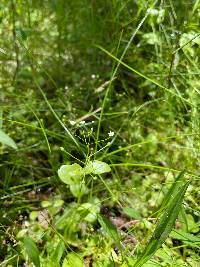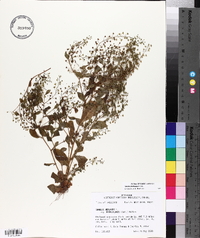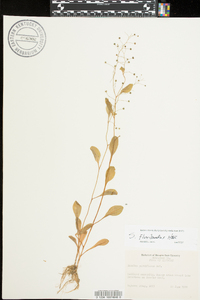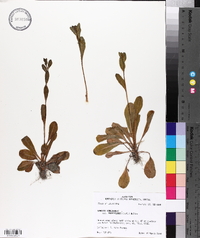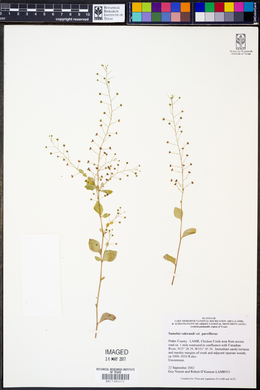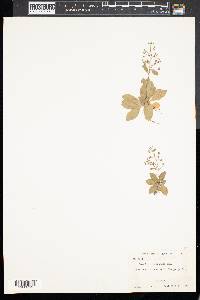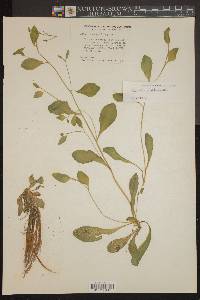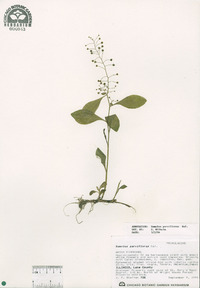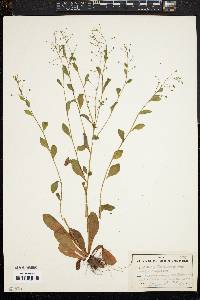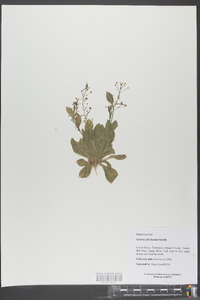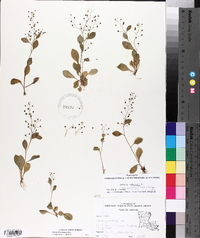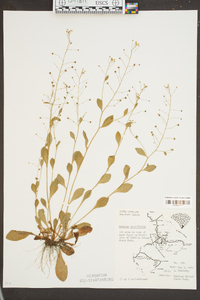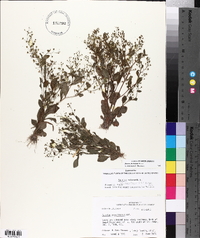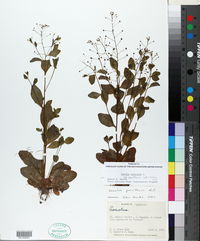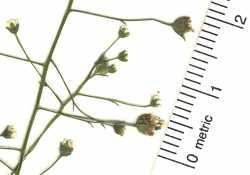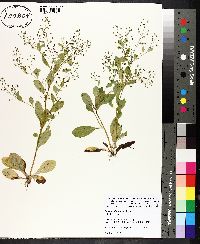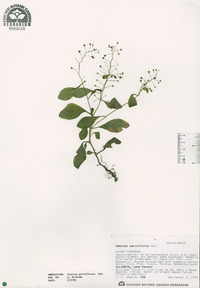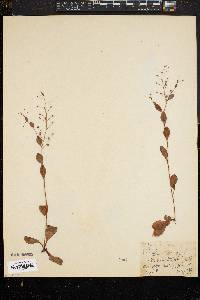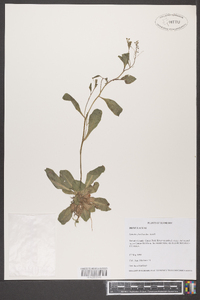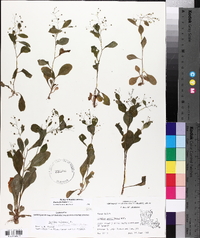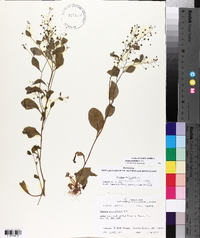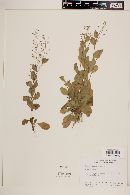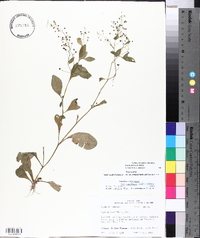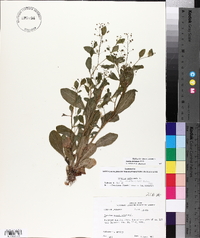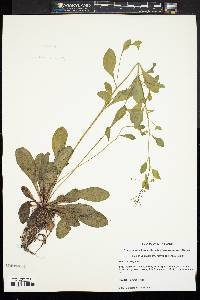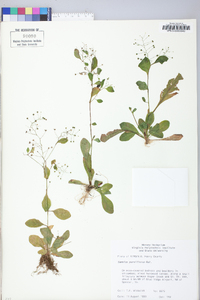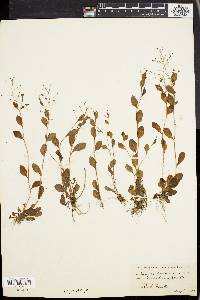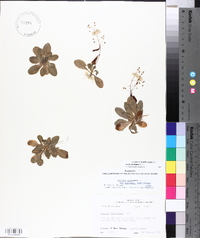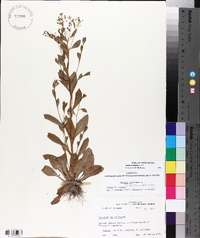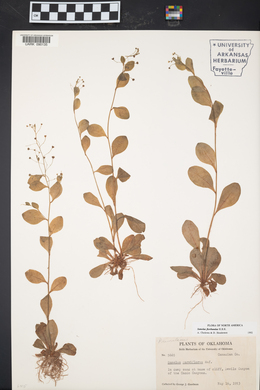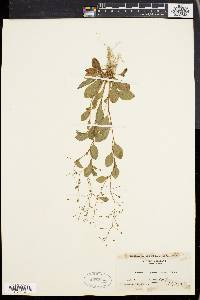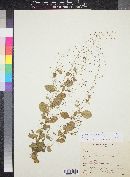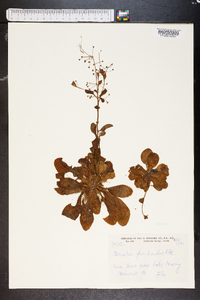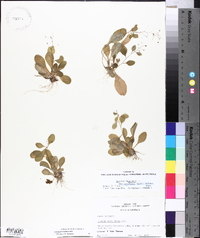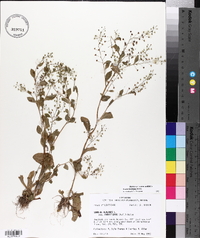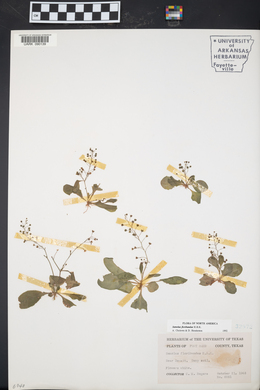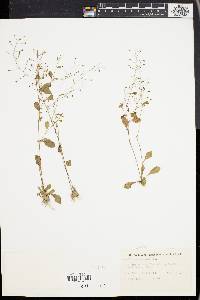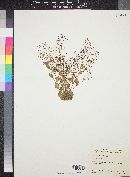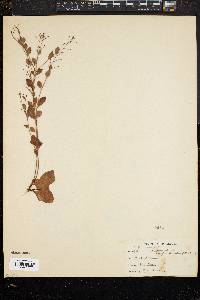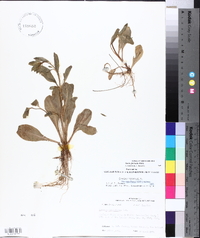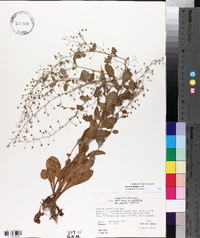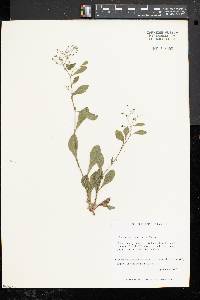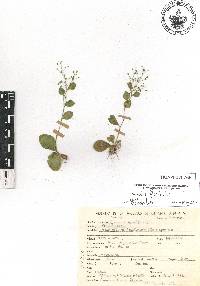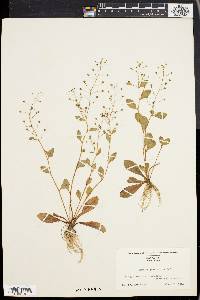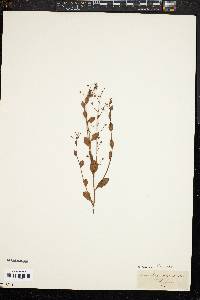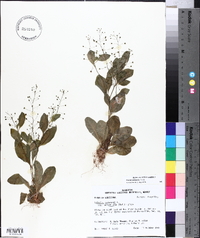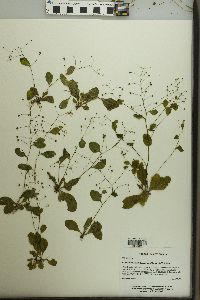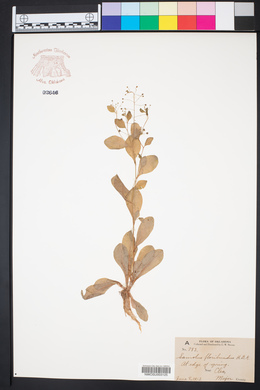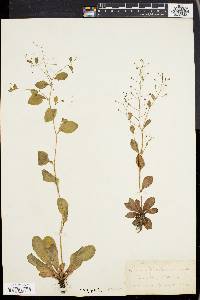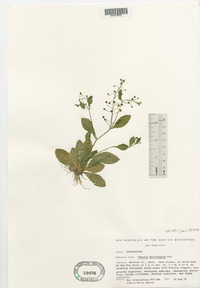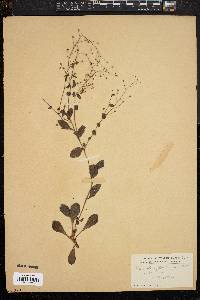Samolus parviflorus
|
|
|
|
Family: Primulaceae
Water-Pimpernel, more...Seaside Brookweed
[Samolus floribundus Kunth, moreSamolus valerandi subsp. parviflorus (Raf.) Hultén] |
Plants light green, not stoloniferous, 0.7-8.2 dm. Stems erect or ascending (rarely prostrate). Leaves basal and cauline or all cauline, sessile or petiolate; blade obovate or broadly spatulate to elliptic, 1.5-15 cm, base decurrent, cuneate, apex rounded to obtuse. Inflorescences terminal or terminal and axillary, usually racemose, sometimes paniculate, sessile or pedunculate; peduncle to 0.7 cm, usually shorter (to longer) than stem. Pedicels spreading or ascending, bracteate, 1.5-14 mm, glabrous; bract at midlength. Flowers: calyx 1.3-1.5(-2) mm, lobes triangular to ovate, shorter than tube, apex acute, not glandular; corolla white, 1.2-3 mm, lobes oblong, longer than tube, base glabrous, apex rounded or emarginate; staminodes 5. Capsules 2-3 mm. 2n = 26. Flowering spring-fall. Wet places; 0-1700 m; N.B., N.S., Ont., P.E.I., Que.; Ala., Ariz., Ark., Calif., Conn., Del., D.C., Fla., Ga., Ill., Ind., Kans., Ky., La., Maine, Md., Mass., Mich., Miss., Mo., Nev., N.H., N.J., N.Mex., N.Y., N.C., Ohio, Okla., Oreg., Pa., R.I., S.C., Tenn., Tex., Utah, Vt., Va., Wash., W.Va., Wis.; Mexico; West Indies; Central America (Honduras); South America (Bolivia); e Asia (Japan). Confirmed Canadian populations of Samolus parviflorus appear to be limited to the Atlantic coastal areas and the Ottawa region of the Saint Lawrence Seaway, with a historical record (1903) known from southern Saskatchewan. A report from British Columbia (www.natureserve.org, 2006) is erroneous; no specimens exist at DAO or UBC as reported. The name Samolus floribundus has sometimes been applied to this taxon. The publication date for S. floribundus is February 1818, making it later than S. parviflorus, published in January of that same year. Some taxonomists include this species within the European S. valerandi; that species has larger flowers and capsules, fewer racemes, and staminodes occurring in clusters of one to three. No specimens have been found of true European S. valerandi in the flora area; previous specimens labeled as S. valerandi are native species, usually S. parviflorus.
Stems 1-3 dm, branched at least above; lvs alternate and in a basal tuft, spatulate to obovate, obtuse or rounded, 2-5(-10) cm (including the petiole); racemes 3-15 cm; pedicels widely spreading, the lower usually 10-15 mm; cal-tube 1.5 mm; fls 2-3 mm wide; fr 2.5 mm. Brackish shores along the coast, and muddy banks of streams and ditches inland; tropical Amer., n. to N.B., s. Mich., and B.C. May-Sept. (S. parviflorus) Gleason, Henry A. & Cronquist, Arthur J. 1991. Manual of vascular plants of northeastern United States and adjacent Canada. lxxv + 910 pp. ©The New York Botanical Garden. All rights reserved. Used by permission. PLANT: 10-82 cm tall with erect or ascending stems. LEAVES: cauline, 1-13 cm long, petiolate or sometimes the basal sessile; blades elliptic to obovate. INFLORESCENCE: with leaf-like bracts on the main axis and with tiny bracts attached at ca. midway or upper half of the pedicels; flowers 10 or more. FLOWERS: white; calyx 1-2.5 mm long; corolla 1.2-3 mm long; staminodia 5. NOTES: See notes in references. In or along streams, springs, seeps, and moist meadows: reported from all cos. except Apache, Gila, La Paz, Maricopa, Yuma; 300-1650 m (1000-5400 ft); Apr-Oct; widespread in N. Amer. From Flora of Indiana (1940) by Charles C. Deam In wet places throughout the state. While I have no specimen from the northwestern part of the state, there are several records for that section. It is usually found on muddy and sandy bars and banks of streams, in ditches, low places in woods, and cultivated fields. Although it produces an abundance of seed, it is never abundant and is usually only an occasional or infrequent plant. …… Indiana Coefficient of Conservatism: C = 5 Wetland Indicator Status: OBL |
|
|
|


